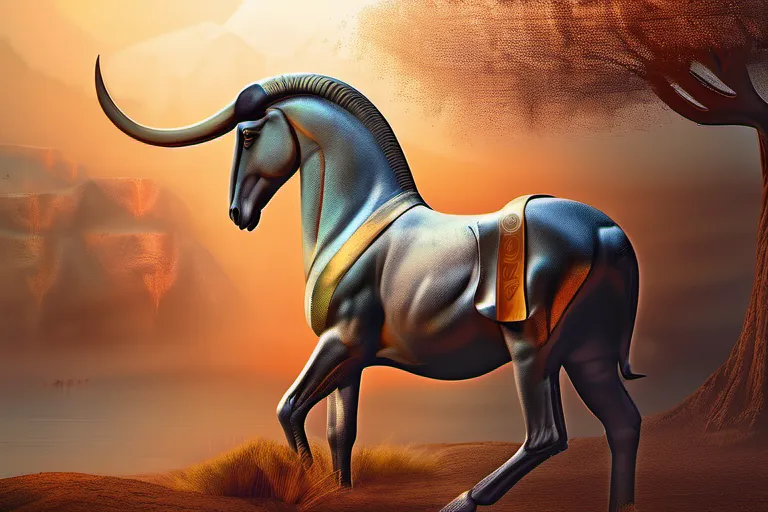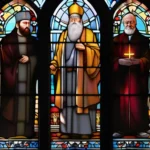Explore the history, beliefs, and spread of this ancient religion.
Mithraism was a mystery religion that originated in Persia around the 6th century BCE. This article delves into the origins, evolution, and key aspects of Mithraism, providing a detailed understanding of this fascinating religion.
The Birth and Early History of Mithraism
Imagine yourself standing at the cradle of human civilization, where ancient Persia once thrived. In this vast land, amidst the rolling hills and bustling cities, emerged one of history’s most intriguing religions: Mithraism. But how did it all begin? How was Mithraism born in the shadow of Zoroastrianism?
Zoroastrianism, with its dualistic view of good versus evil and its veneration of Ahura Mazda, offered a framework rich with symbolism and spiritual depth. But within this grand tapestry, a smaller thread began to weave itself—a thread that would eventually become the heart of Mithraism.
So, how did Mithras come into existence? Was he always there, waiting in the shadows until his moment arrived, or did he emerge from the fertile soil of Zoroastrian beliefs? Mithra, initially a deity associated with contracts and covenants, slowly transformed over time. He began to embody not just agreements but also protection, justice, and light.
As Mithras grew in significance, he took on attributes that resonated deeply within the human psyche—attributes like courage, honor, and fidelity. These qualities were crucial in a world where battles for survival were as common as the changing of seasons. The central figure of the Mithraic Mysteries soon became more than just a deity; he was a guide, a protector, and a symbol of strength.
The early spread of Mithraism followed trade routes and military campaigns, much like a whisper that gradually grows into a roar. As soldiers carried their beliefs across empires, the religion adapted to new cultures, absorbing local customs while retaining its core spiritual essence. It was as if Mithras himself was a chameleon, blending seamlessly with the diverse societies he encountered.
In this fascinating journey, Mithraism not only preserved but also expanded upon the teachings of Zoroastrianism. Its mysteries and rituals provided comfort and guidance to individuals navigating the complexities of life in the ancient world. And so, the birth of Mithraism is a testament to the dynamic nature of religion—ever evolving, ever adapting, yet always rooted in its origins.
Mithras: The Central Deity of Mithraism
Mithras, the central deity of Mithraism, remains a fascinating enigma in ancient religions. Who was this god that captivated thousands during the Roman Empire? Was he simply a sun god, or did his attributes and role transcend such simplistic definitions?
Imagine Mithras as a protector of oaths and contracts—a loyal friend who watches over every promise made under the sky. His attributes are a tapestry woven with threads of light: he is the Invincible Sun, the God of Covenants, and the Victorious Lord. Each title speaks to his dual nature as both a celestial body and an earthly protector.
In Mithraism, Mithras was more than just a deity; he embodied the essence of loyalty, courage, and truth. His role in the religion wasn’t merely ceremonial but deeply philosophical. He was seen as a warrior god, slaying the bull—a symbol of the zodiac and human ignorance—to release life-giving forces into the world. This act is often depicted in Mithraic imagery, where Mithras stands against the cosmic darkness, his sword piercing the bull’s neck.
But why did Mithras hold such a central place in this ancient religion? Perhaps it was because he represented the unbreakable bond between men and gods. Just as soldiers swear oaths to protect each other, so too did followers of Mithras pledge their loyalty to him. In times of turmoil, his presence offered stability and hope.
As we explore further into Mithraism, it becomes clear that the worship of Mithras was more than a mere belief system—it was a way of life. His attributes and role in the mysteries spoke directly to the heart of human experience, making him a powerful figure for those seeking both spiritual guidance and social cohesion.
The Mithraic Mysteries: Initiation and Rituals
The Mithraic Mysteries: Initiation and Rituals
Imagine stepping into a dark, dimly lit chamber where light gradually illuminates your path. This is not just any place; it’s a rite of passage into the inner sanctum of Mithraism. The initiation process was designed to be both challenging and profound, much like a journey through a labyrinth.
The initiations in Mithraism were hierarchical, with each level representing a step closer to enlightenment. Consider this: how many times have you climbed a ladder, one rung at a time, only to find yourself looking down on the world from a higher vantage point? This is what initiates experienced as they moved through various stages.
Each stage had its own set of rituals, which were steeped in symbolism. For instance, the first initiation, called Axias, involved a symbolic battle with a lion, representing courage and the strength to face life’s challenges. This ritual was not just about physical endurance but also about inner fortitude.
The most celebrated ceremony was the Corpus Christi, or the “Body of Christ” ceremony. It mirrored the sacrifice of Mithras with a bull, symbolizing the eternal cycle of life and death, rebirth, and renewal. Participants would eat the ‘lamb’s heart’ to embody Mithras’ strength and wisdom.
These rituals were not just symbolic; they were deeply immersive experiences that transformed initiates into members of an exclusive brotherhood. Think about how the secrets you keep can shape your identity—much like how these rituals reshaped the lives of those who participated in them.
In Mithraism, every symbol and ritual was a key to unlocking a deeper understanding of life itself. The labyrinthine path of initiation mirrored the complex journey from birth to death and beyond, with each step revealing new facets of existence. As initiates moved through these stages, they were not just becoming followers but were undergoing a profound transformation.
The Spread of Mithraism: From Persia to Rome
Imagine Mithraism as a river, flowing from its ancient origins in Persia to the bustling streets of Rome. Just like a tributary merging into a mighty stream, Mithraism’s spread was gradual yet transformative. In Persia, this deity was worshipped under the name Mitra, often associated with sunlight and cosmic order. As empires rose and fell, so did the faith’s influence.
When Alexander the Great swept through Persia in the 4th century BCE, he wasn’t just conquering lands; he was also introducing his subjects to new gods, including Mithra. The spread of Greek culture and ideas acted like a strong current, guiding the river of Mithraism into Hellenistic regions.
Now, picture roads and trade routes as arteries for religious ideas, just as much as they were for commerce. As these pathways crisscrossed the known world, Mithraism hitched a ride on this spiritual exchange. By the 1st century BCE, it had reached the heart of the Roman Empire, where its teachings found fertile ground among soldiers and freedmen.
Consider the Mithraeum, a subterranean sanctuary, as a secret cave, where worshippers gathered in darkness to symbolize the birth of Mithra. These underground temples were not just places of worship; they were also spaces of initiation and ritual. The spread of these hidden sanctuaries mirrored the secretive nature of the faith itself.
As Mithraism continued its journey, it began to intertwine with local traditions and practices, adapting and evolving. It wasn’t a one-way street; rather, Mithraism influenced and was influenced by the cultures it encountered. This dynamic interaction helped it grow in popularity, much like a seed that sprouts and thrives in diverse soil.
From its humble beginnings in Persia to its prominence among Roman legions, Mithraism’s journey is a testament to the power of religion in shaping human history. It’s fascinating to think about how this ancient faith, with its mysteries and rites, laid down roots that still resonate today, even if only faintly.
So, as we trace the spread of Mithraism from Persia to Rome, we’re not just following a geographical path; we’re exploring the threads of history that connect one era to another. The story of Mithraism is like a map, guiding us through the ages and reminding us of the enduring power of belief.
Mithraism vs. Christianity: Comparing and Contrasting
The origins of Mithraism and Christianity seem to have intertwined like two threads in an intricate tapestry, each reflecting the cultural and religious landscape of their times. But what exactly were these ancient religions about? How did they differ from one another, especially when both claimed divine figures as central to their beliefs?
Mithraism was rooted deeply in Persian mythology, where Mithras, a god associated with light, truth, and contract, played a pivotal role. The question arises: could the concept of Mithras have influenced early Christian imagery and symbols? Many scholars believe that the idea of a savior figure who sacrificed himself for the benefit of humanity was not unique to Christianity but also found in Mithraism.
- Was the image of Christ as the ‘Lamb of God’ simply an evolution from earlier sacrificial traditions?
The practice of baptism, so central to both religions, might be another shared element. Both Christianity and Mithraism used initiation rites that symbolized a new birth or purification process. The metaphorical comparison could be drawn between the baptism in water in Christian tradition and the purification by blood in Mithraic rituals.
However, while both religions had their share of communal meals, the Eucharist in Christianity was more than just a symbolic act; it represented the body and blood of Christ. In contrast, Mithraic feasts were focused on strengthening the bond between members rather than commemorating sacrifice. This difference highlights how the purpose of these rituals diverged significantly, reflecting broader religious and cultural contexts.
The mystery surrounding Mithras’ birth and his status as a cosmic warrior added layers of complexity to Mithraism that Christianity would later adapt in the personification of Jesus. The question remains: how did Mithraism’s focus on the hereafter influence Christian eschatology, which emphasizes judgment day and eternal life?
In exploring these parallels and differences, it becomes clear that the evolution of both religions was influenced by their surroundings and the philosophical currents of the time. While Mithraism faded with the rise of Christianity as the dominant faith in the Roman Empire, its legacy lives on in the ways we understand divine sacrifice, communal worship, and even the structure of religious festivals.
The Decline and Legacy of Mithraism
The decline of Mithraism raises intriguing questions about its fate and the complex forces at play. Was it simply outshone by the rising star of Christianity, or did internal weaknesses contribute to its downfall? It’s like asking whether a sunset occurs because the sky is overtaken by night or if the sun itself has set from the heavens.
One theory suggests that Mithraism’s decline was due to its exclusivity and complexity. In contrast to Christianity, which embraced people of all backgrounds, Mithraism was predominantly a male cult centered around initiation rites and mystery practices. This exclusivity might have limited its appeal in an increasingly inclusive religious landscape.
Another perspective points to the political maneuverings of the Roman Empire itself. The rise of Emperor Constantine and his subsequent conversion to Christianity had profound implications. By granting religious freedom and support to Christianity, the state effectively favored one religion over many others, including Mithraism. This political shift could have been as decisive as a tide turning in favor of a new master.
However, it’s also important to consider how Mithraism adapted or failed to adapt to changing times. Its deep-seated beliefs and practices, while fascinating and profound, might not have resonated with the broader population seeking more accessible forms of spirituality. It’s akin to comparing the complexity of a symphony with the simplicity of a folk tune; both are beautiful in their own right, but only one may capture a wider audience.
Despite its decline, Mithraism left an indelible mark on subsequent religions and cultures. The zodiac symbols associated with the twelve signs of the zodiac, which feature prominently in Mithraic iconography, continue to influence astrology today. Furthermore, the concept of a ‘lupercal’ feast or purification ritual has echoes in modern celebrations like Valentine’s Day, though the original meaning is often lost.
Mithraism’s legacy also lies in its architectural and artistic contributions. The underground temples known as shawas (caves) are masterpieces of early architecture, blending practicality with spirituality. These structures not only served religious functions but also became centers for community gatherings and celebrations, prefiguring the role of churches in medieval times.
In conclusion, while Mithraism faded into history, its influence endures through symbols, rituals, and even places that still exist today. It’s a reminder of how religions adapt, change, or disappear, leaving behind a complex tapestry of human belief and practice. The decline of Mithraism is not just a historical footnote but a story of resilience, adaptation, and the ever-evolving nature of faith.
Conclusion
 By the end of this article, you will have gained valuable insights into the history, beliefs, and spread of Mithraism. You’ll also understand why it was such a significant religious movement in the ancient world.
By the end of this article, you will have gained valuable insights into the history, beliefs, and spread of Mithraism. You’ll also understand why it was such a significant religious movement in the ancient world.











